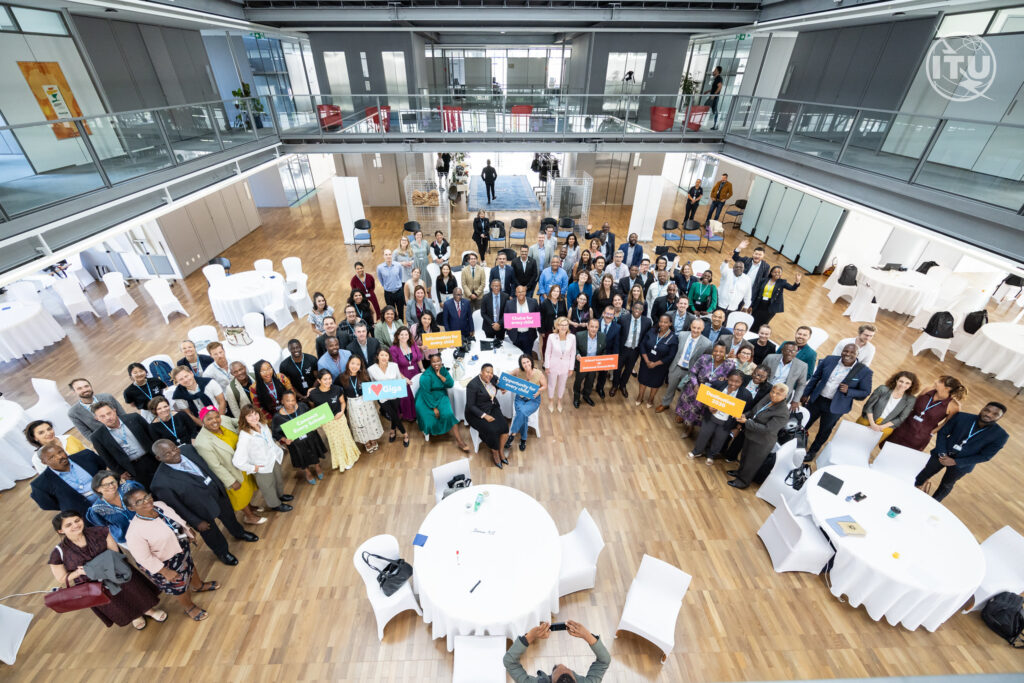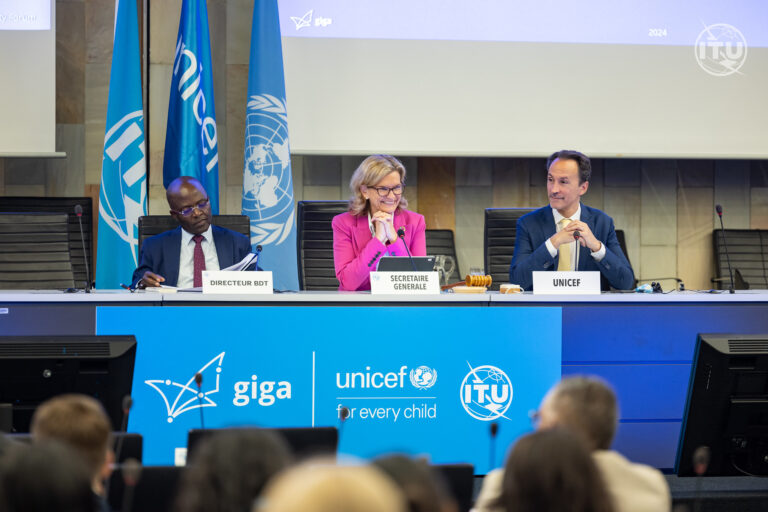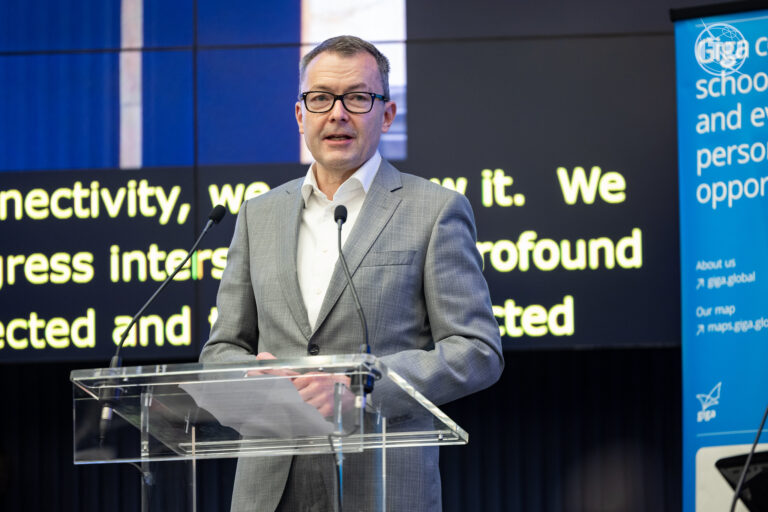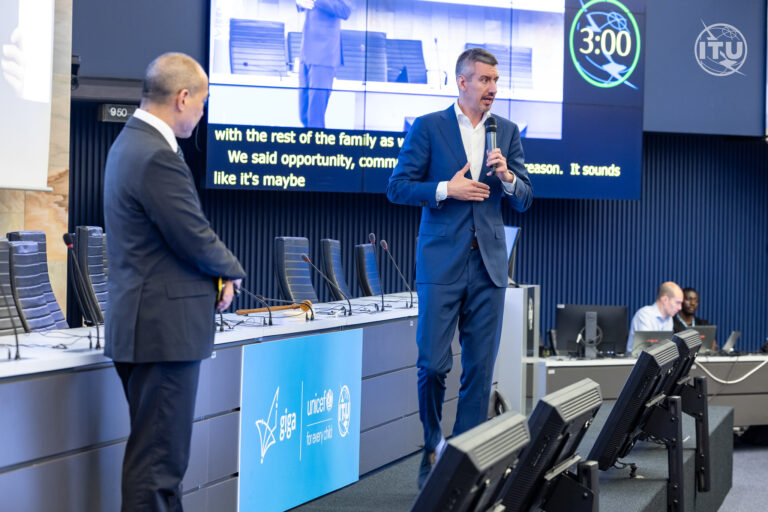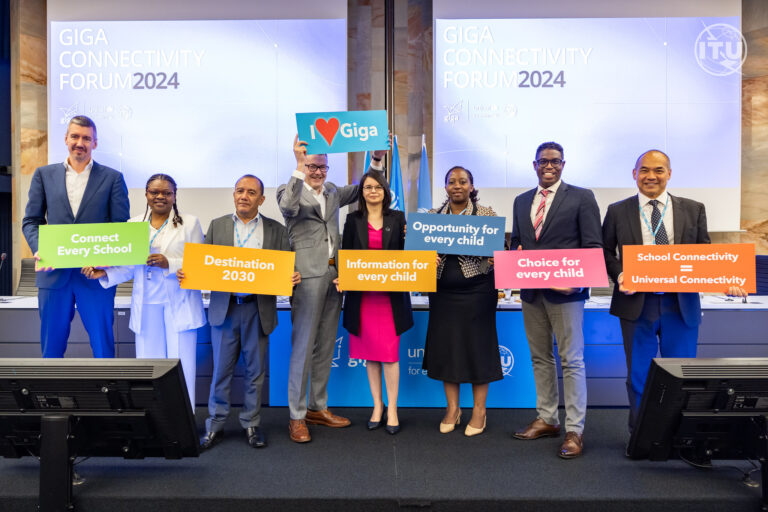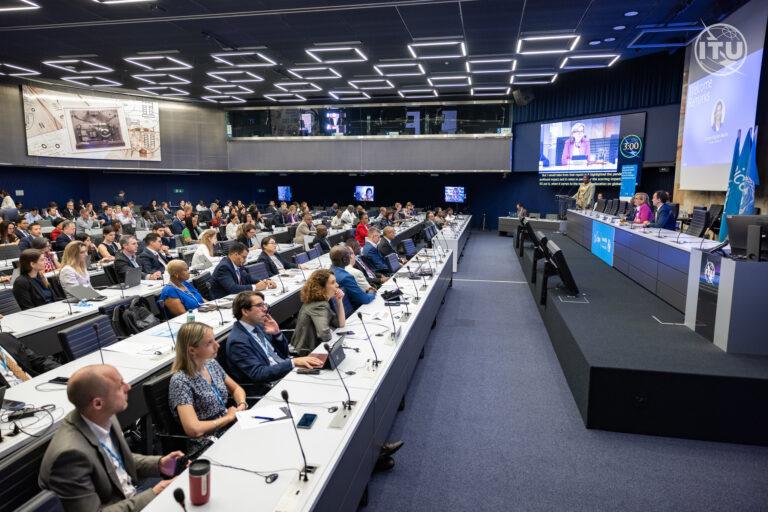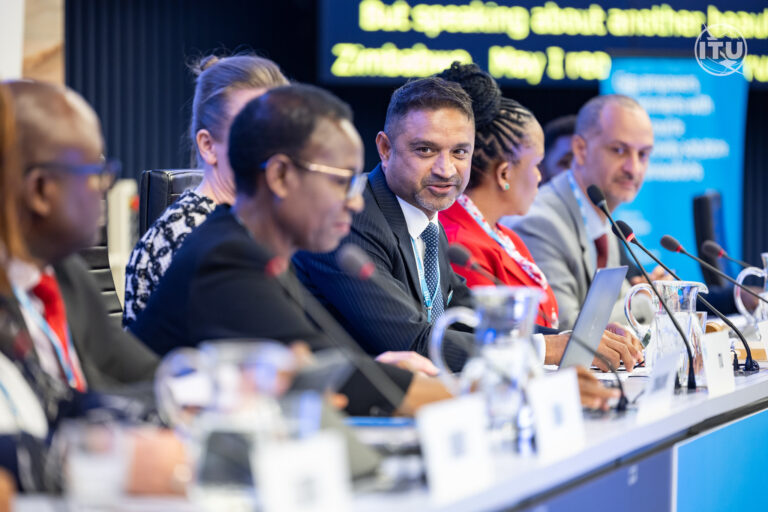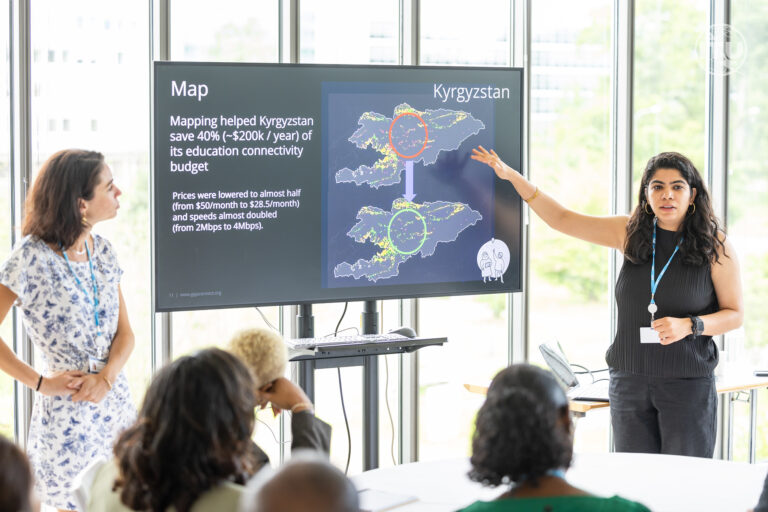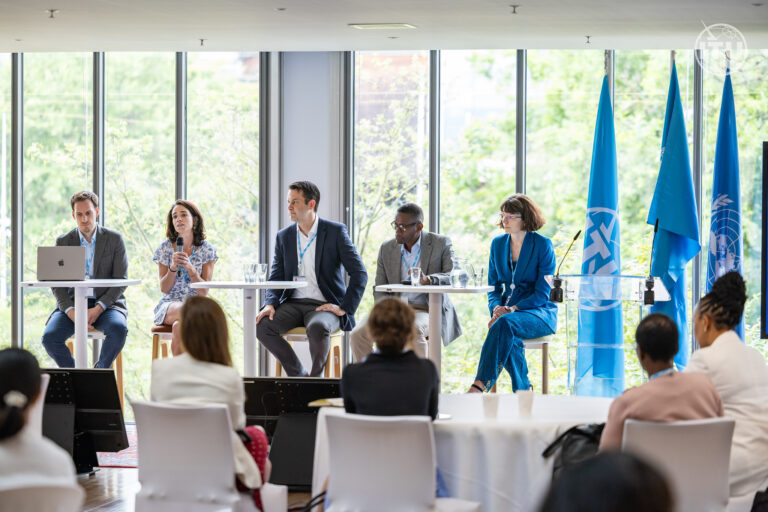With some three million schools in the world still unconnected to the internet, roughly half of the estimated total, the huge task of bringing online learning into classrooms requires another kind of connectivity: the linkup of multistakeholder and multifaceted approaches on a global scale to close the digital divide.
This was the mission of the first Giga Connectivity Forum (GCF), which took place in Geneva, July 8-10. Organized by Giga, the ITU-UNICEF initiative to help connect all the schools in the world to the internet by 2030, the event was the first ever to bring together a majority of Giga-supported countries and stakeholders to advance school connectivity — over 240 registered participants, from governments and financial institutions to international experts and representatives of the Swiss ecosystem.
At a time of rapid technological change, the digital divide is education is further widening inequalities. This makes connecting schools to the internet “one of the most urgent and one of the most defining challenges of our time,” ITU Secretary-General Doreen Bogdan-Martin said at the event’s opening.
The GCF, she added, is a platform designed to accelerate Giga’s impact through knowledge sharing and community building, and by recognizing that school connectivity requires tailored rather than cookie-cutter solutions. “Each country, each circumstance is unique, and we want to make sure that we take that uniqueness into account.”
Jürg Lauber, the Permanent Representative of Switzerland to the United Nations Office and other International Organizations in Geneva, noted in his remarks that the government of Switzerland supports Giga because ITU and UNICEF are “showing us the way in terms of how to collaborate, by leveraging the expertise, resources and networks of ITU, UNICEF and the private sector.” Spain, the regional government of Catalonia, and the cities of Barcelona and Geneva are also backers of the Giga initiative.
Reflecting this collaborative approach, the GCF’s first sessions provided an overview of the key learnings in school connectivity from each country where Giga is engaged. That segued to a series on how governments can leverage Giga’s five main action areas: map, model, finance, contract and capacity development.
Giga Maps, a live open-source map that allows governments to geolocate schools and measure their real-time connectivity status, sets the stage for subsequent Giga actions. By pairing school and infrastructure data, Giga can then model optimal connectivity solutions and financial mechanisms to help government decision-makers connect more schools.
Attendees had questions and suggestions to improve Giga’s tools to better meet their needs. Based on their feedback, these are some of the next steps Giga will be working on to accelerate the school connectivity process:
Map: Giga will scale its product suite to more countries not yet supported by Giga and accelerate its ongoing mapping of schools hosting refugees to ensure they are identified and included in national connectivity plans.
Model: Include not only capital expenses (CAPEX) in financial costing but maintenance expenses (OPEX) to ensure sustainable connectivity. Also, Giga needs to intensify efforts to get more and better quality data from governments and internet service providers to improve modeling outcomes.
Finance: In coordination with Giga’s work in modeling, Giga will add enhancements to its cost calculator to make estimates more accurate. With that in hand, more effort will be made to identify capital sources for school connectivity to help decision-makers advance their projects. Additional modes for deploying capital also are underway through a range of programmes and more information will be made available on upcoming accelerator programmes, start-up funding and connectivity credits.
Contract: The next step is a new initiative by UNICEF to aggregate demand and procure connectivity in bulk, leveraging economies of scale. This can help countries reduce the length of procurement processes and increase the volume of schools connected.
Capacity Development: Giga is ramping up its resources to address capacity development through the Giga Global Connectivity Centre and Learning Hub, set to open in Geneva by the end of the year. Operated by ITU, the hub will offer training activities in all phases of the connectivity process. Thanks to the input from GCF attendees, Giga will now further refine audience needs and training activities for the hub. To that end, the localization of content will also be key.
A few snapshots from the Giga Connectivity Forum held at ITU Headquarters in Geneva, Switzerland. See more pictures on ITU’s Flickr.
Among the special sessions at the GCF was a focus on connectivity in Africa. Held in alignment with the African Union’s designated Year of Education, this discussion was part of Giga’s ongoing focus on some of the main regional challenges to school connectivity, such as sustainable energy support, financing and innovative sustainability models for connected schools.
In a recorded message delivered at the conference, Claver Gatete, UN Under-Secretary-General and Executive Secretary, UN Economic Commission for Africa (UNECA) said that with 70% of Africa’s population under 30 years old and the continent projected to account for 42% of the world’s youth by 2050, school connectivity can turn “this demographic trend into a demographic dividend.”
This makes the Giga initiative “a commitment that the UNECA is firmly supporting.”
“This will help to bridge the digital divide and enhance education opportunities for millions of children across the African continent.”

